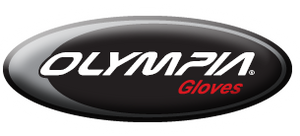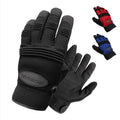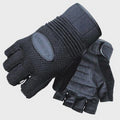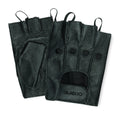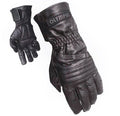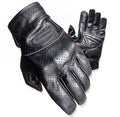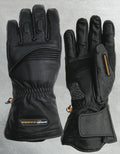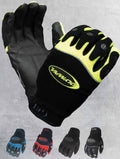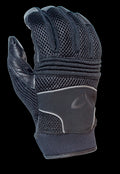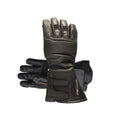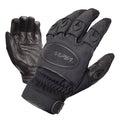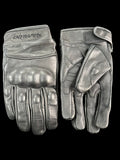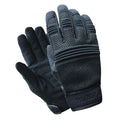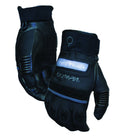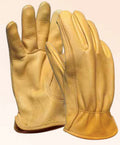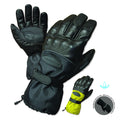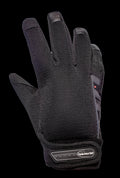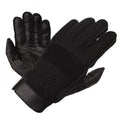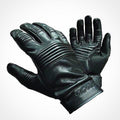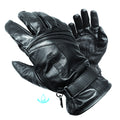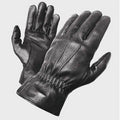Which Leather For Gloves? Cowhide Vs. Goatskin, Kangaroo And More
Posted by ROGER HEUMANN
Many people ask us which leather is best for gloves. With all the choices, it can get confusing.
Cowhide vs. goat skin? Deerskin vs. pigskin? Elk? Kangaroo?
The answer is, it depends. Different leathers are best for different purposes.
If you’re a winter rider, you may have one set of needs. If you’re using the gloves for summer, other qualities may be important.
The choice usually comes down to three things … design, budget, and performance needs. Here are the key differences, for the most commonly used glove leathers. more
Cowhide vs. Goatskin Leather
There are a wide variety and qualities in both cowhide and goatskin, but generally speaking cow is a better leather for the following reasons:
- Smoother and softer grain
- Better tensile strength and abrasion resistance
- Better stretch
Goatskin is a very widely used glove leather because it costs on average about 25% less than cow. That’s because with people eating less beef, the price of cowhide is way up. This cost advantage is one reason goatskin is used instead of cowhide.
But it is not a perfect substitute:
2. Goat can be split and shaved to a lighter weight than cow. This is an advantage if you desire a more dexterous/closer fit. That’s one reason we might choose goatskin for summer weight gloves on the palm side of gloves.
The trade-off is that less weight (thickness) comes at the expense of durability … which is why cowhide is an advantage in certain gloves.
3. Goat can have a very good “glove stretch” … and no matter if it is cow or goat, “stretch” is a very important quality for certain gloves.
For instance, think about how a well-cut golf glove feels and fits so well. In the case of leather for unlined and light lined gloves, stretch is essential. So, if you are making a thick lined cold weather glove, maybe stretch is not a big issue, but if the leather is right next to your hand, it is.
We often say that you really have to try on a glove. A leather glove can look good in a picture, but the only way to know how it will stretch and fit your hand, is by trying it!
Other Common Glove Leathers
There are other leathers suitable for making gloves, and commonly used. Here are some other good choices:
Cabretta was traditionally a specific breed of hair sheep produced in South America. Today the term cabretta is used for any good quality hair sheep whether raised in South America, Pakistan or Africa. (Hair sheep is raised for meat as opposed to wool sheep which are not surprisingly for wool … go figure!)
Cabretta is a top choice for better dress gloves and golf gloves because of it’s light weight, glove stretch and durability. It’s great for gripping a nine iron. If you’re a golfer, you already knew that:)
Bottom Line: Best Leather for Gloves?
See … we told you it was complicated! Now you can see why there is no real answer to the question. It depends on you, and your needs. As a rider, your decision will end up being a personal one.
Guidelines When Shopping for a Leather Motorcycle Glove:
- Choose a glove that fits well, feels comfortable on, suits your budget, and has the performance features you want.
- Choose a glove made by a reputable manufacturer; you can trust that their expert glove designers have selected a suitable leather for your purpose.
- Read online reviews — on retail sites, in rider forums — to size up different gloves before making your purchase.
-
You get what you pay for. You can find cheap, no-name gloves made from poor quality scrap leathers. But for a little more, you can get a glove with a much higher standard of quality, fit and performance — like these 5 styles for under $50 bucks. That choice is up to you.
- One more thing: Leather is not inherently water resistant. To make that claim, water-resistant treatments are necessary. And since this treatment adds about 5-10% to the cost of a glove (as opposed to waterproof — another thing entirely), read the manufacturer’s fine print very, very carefully, to know what you are buying!
Still have leather questions?
Here is a 5-part series on leather glove manufacturing, if you really want to know more about leather for gloves.
And whatever leather glove you choose, care for them with an occasional coat of mink oil or leather conditioner, to keep things sealed and flexible, and your hands will be happy for years to come.
Leave a comment, and ask us a question! Happy leather glove shopping, and ride safe!
